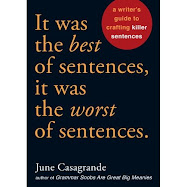As you know, substantiveness is all about substance. And that’s exactly what we’re seeking every time we click an enticing headline from AOL News or Yahoo! Health or CNN Money – meatiness, meat, carne.
But too often, the popular online articles that lure us in with headlines promising interesting facts contain only facts that are kind of interesting or interesting things that are not really facts or factual things that aren’t terribly interesting or things we already knew but didn’t know we knew because they were presented to us as things we didn’t know. The result? We’re left disappointed by the articles’ utter insubstantiveness and shocking lack of substance.
I, for one, like many, for example, possibly you, have wasted many a half-hour chunk of time reading about how to pare down my leg-shaving expenses, interpret my cat’s nonverbal cues, and take 10 years off my earlobes. Luckily, the time wasted usually belongs to an employer and not to us. Nonetheless, it's time you could have spent learning how to gauge the power of your own handshake or channel Warren Buffet or paint on the perfect eyeliner “cat eyes.” So here are 10 surefire signs that the article you’re reading is a pile of hooey not worth the precious time you’ve stolen from your employer.
1. The article begins with “as you know.”
2. The article that begins with “as you know” follows up by stating something you know.
3. The bulk of the information is conveyed through images of beautiful married twentysomethings under the covers or Photoshopped blueberries.
4. The article’s best money-saving tip is “don’t spend money.”
5. The article’s best weight-loss tip is “don’t eat.”
6. A little math reveals that the article is telling you to eat 48 shiitake mushrooms and eight pounds of wild salmon a day and wash it all down with four gallons of green tea.
7. The sole source quoted in the article is credentialed as “resident” or “laid-off employment counselor” or “Fox News analyst.”
8. The article is written in the first person by someone you’ve never heard of but is proud she no longer spends $480 a month on NetFlix.
9. The article contains a numbered list.
10. The list of tips is a nice round number like 10, even though the writer clearly ran out of material at 9.





